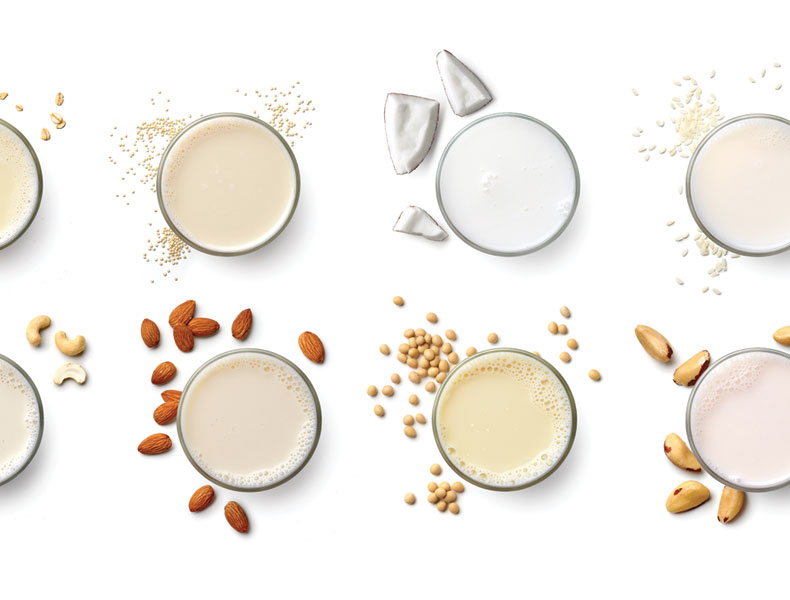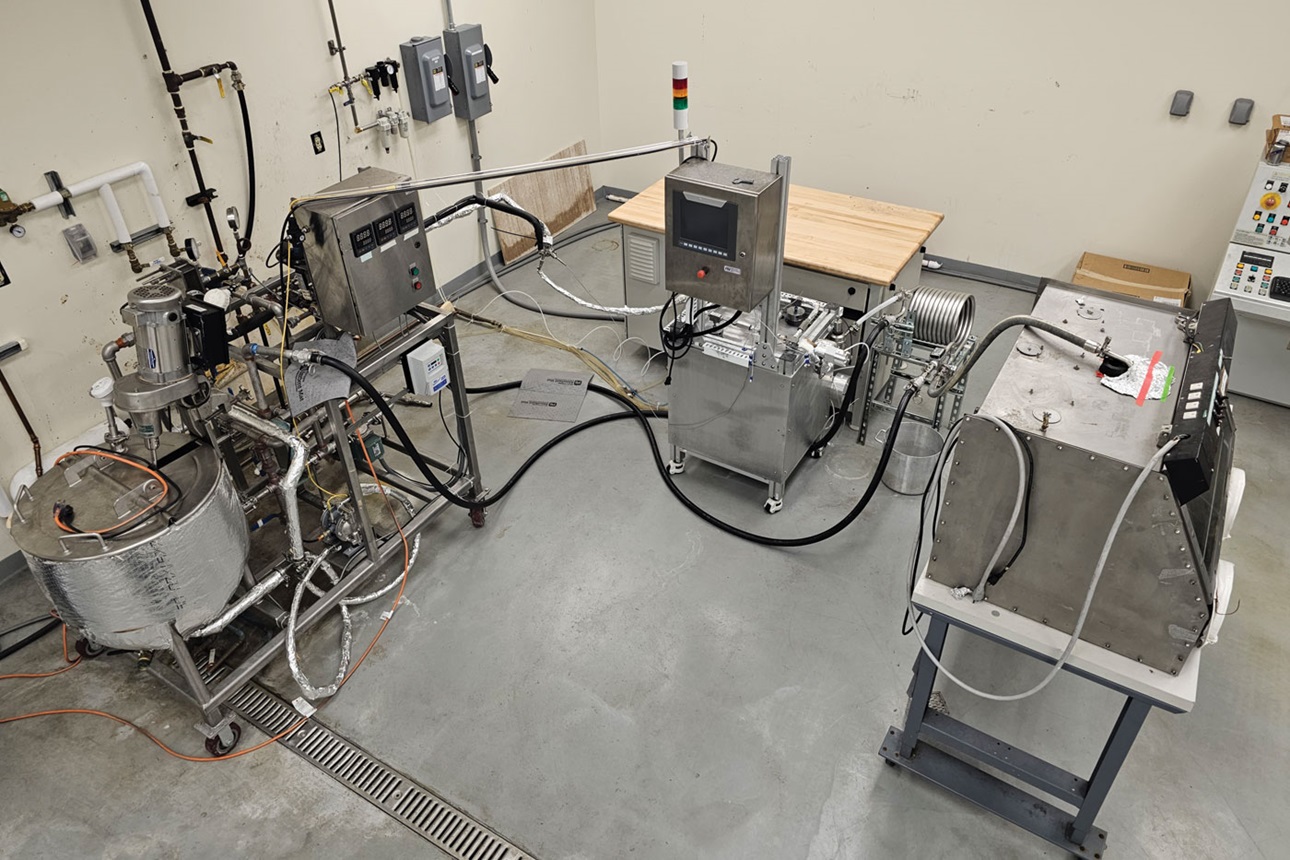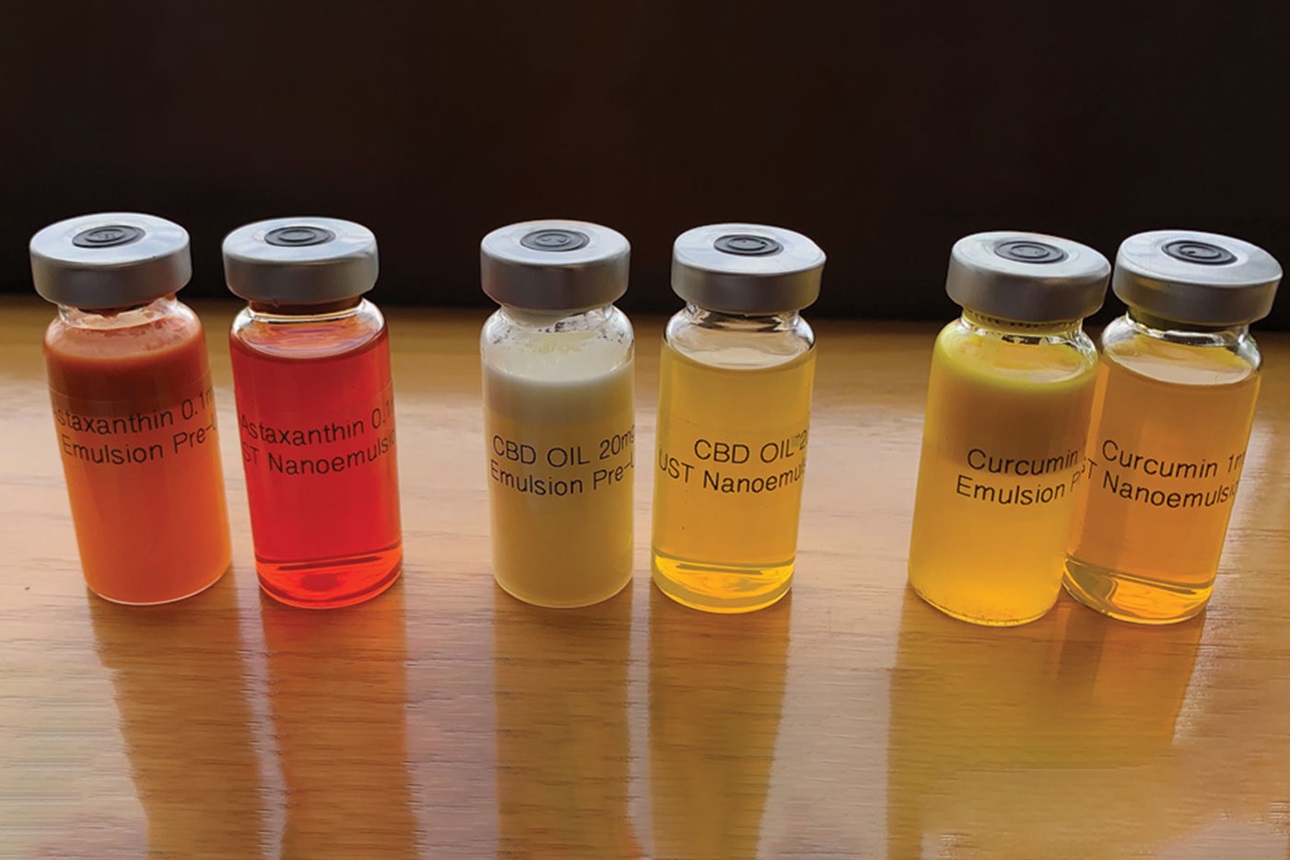Food Technology Magazine | Applied Science
Ultra-shear: A Transformative Technology
In this article, readers will learn about promising research advances in ultra-shear technology for producing clean label beverages and emulsions.

© baibaz/iStock/Getty Images Plus
Health-conscious consumers are driving changes in the food manufacturing industry by increasing demand for safer and healthier clean label processed foods that are free from synthetic additives. In place of sugary drinks, consumers prefer beverages that not only quench thirst, but also meet various lifestyle demands, including satisfying hunger with high protein, enhancing immune health, and improving recovery after endurance training and competitions. Food scientists and engineers are working to develop various innovative next-generation thermal and nonthermal technologies that may help address these consumer needs. Among these, ultra-shear technology (UST), a hybrid nonthermal-thermal technology, has the potential to revolutionize processing of clean label beverages, sauces, and emulsions.
As part of a U.S. Department of Agriculture National Institute of Food and Agriculture (USDA NIFA) research grant project, researchers from The Ohio State University (OSU) and Pressure BioSciences Inc. (PBI), have been working to develop the technology further, studying opportunities for potential improvements in liquid food preservation and safety, stable dispersions of plant proteins, and nanoemulsions of products processed by UST.
Unique Features
Ultra-shear technology employs up to 400 MPa to pressurize the liquid food followed by depressurizing the treated liquid via a special self-controlling shear valve. The shear valve converts high pressure into fluid dynamic force. It also employs a new method of delivering fluid pressure to the valve, allowing for high flow rates and lower costs. The UST shear valve has a throttling design that dynamically adjusts the annular flow restriction gap to ensure that all material gets processed at the maximal shear rate. By maximizing fluid velocity and minimizing the restriction gap distance, shear rates of 109–107 s-1 can be attained. When the fluid is discharged through the shear valve, the energy of pressure is converted into kinetic energy and then heat. The resulting nearly instantaneous product temperature increase (18°C–20oC per 100 MPa) also helps to minimize product quality deterioration and extend shelf life.
The throttling action of the valve makes it resistant to clogging and ensures that all the product is processed at the maximum shear rate possible, preventing any under-processed material from passing through the system. The shear valve is manufactured from inert ceramic materials that are not prone to rapid cavitational erosion, which is typical of conventional technologies.
Another significant innovation in UST is the fluidic isolator concept, which physically separates the flow of pressure transfer fluid (water) from the product being processed. The isolator concept effectively prevents product cross-contamination with debris from pump components and pressure transfer fluid, greatly simplifying the processes of equipment sanitation and cleaning.
Versatile Applications
By selecting appropriate UST process parameters such as pressure, temperature, and shear rate, as well as product parameters including pH, water activity, and composition, a range of treatment effects can be achieved. This includes preservation (pasteurization or commercial sterilization) of liquid foods, blending of dairy-plant proteins and fats to produce stable colloidal systems such as dispersions, and the ability to formulate food-grade nanoemulsions to facilitate rapid absorption and higher bioavailability of active ingredients.
Preservation. As a hybrid nonthermal-thermal technology, UST can employ the conventional thermal processing criteria for pasteurization or commercial sterilization of acid or low-acid liquid foods. UST process time can be estimated based on the residence time of the fluid at target temperature within the holding tube placed downstream of the shear valve. Researchers have shown that a combination of pressure, temperature, and shear can synergistically inactivate vegetative bacterial cells and spores.
While bacterial vegetative cells can be inactivated under milder pressure-thermal-shear treatment conditions, bacterial spores generally require a more intense UST treatment. It is worth noting that our studies and studies conducted elsewhere have not observed possible protective effects of pressure, thermal, and shear combinations on various microorganisms tested in comparison to conventional thermal processes. Another added food safety benefit of UST is that shear can break clumps of spores or cells, which decreases the protective effect of clumping and increases the exposure of individual cells or spores to heat, pressure, and other lethal agents in food formulation.
Typical steps in pasteurizing or sterilizing liquid foods involves filling a bladder housed within a high-pressure chamber with unprocessed pumpable liquid food at a certain initial temperature using a low-pressure charge pump, pressurizing it to 400 MPa, and then discharging through the UST valve. Subsequently, the treated liquid passes through a holding tube and a cooling heat exchanger followed by aseptic packaging. Since the product passes through the shear valve with tiny clearance, UST technology is not suitable for preserving liquids containing large particulate matter. However, such particulate matter can be processed separately and added to the treated liquid during aseptic packaging.
As a part of the USDA NIFA project, PBI developed and installed pilot-scale UST equipment at The Ohio State University. This equipment is capable of (semi)-continuous operation at pressures up to 400 MPa and flow rates up to 4 L/min. The concept can be readily scaled-up to industrial scale using commercial high-pressure pumps and pressure vessels, which are available in the market. To the best of our knowledge, no UST-pasteurized or sterilized products are currently available in the market.
Stable dispersions from dairy-plant proteins. Most high protein liquid foods today rely on animal protein sources, including dairy milk, chicken, and beef broth. However, due to growing environmental sustainability concerns, consumers are interested in diversifying their diets or adopting a flexitarian approach to protein intake. Beverages made from alternative protein sources such as soy, pea, and almond can help satisfy these needs. However, sedimentation of plant proteins in formulated beverages presents a challenge, leading to instability and non-homogeneity. While synthetic additives like stabilizers or emulsifiers can address these concerns, they do not align with the current trend toward clean label processing. This is where UST can be a valuable processing tool for producing stable plant and plant-dairy protein blended beverage dispersions without the need for synthetic stabilizers. Formulated protein beverages can be UST-treated in a manner similar to procedures described for preservation.
In addition to food safety benefits, UST technology can be applied to modify proteins and fats in food systems, contributing to their structure, texture, and stability by inducing thickening or gelling or changing their surface properties. Research conducted at OSU demonstrated the feasibility of making dairy-plant protein dispersions from various dairy and plant proteins (including soy, pea, mung bean, almond, chickpea). We also demonstrated the feasibility of making ice cream without any emulsifiers from a UST-treated simple ice cream mix.
Nanoemulsions. With rapid progress in nanotechnology, nanoemulsions have received significant attention in recent years as an innovative means of drug delivery in pharmaceutical and nutritional supplement industries. As liquid colloidal systems, nanoemulsion formulations have been shown to facilitate rapid absorption and higher bioavailability of several active ingredients in oral, parenteral, transmucosal, and transcutaneous applications. Nanoemulsions with a droplet size below 100 nm have demonstrated unprecedented kinetic stability leading to a commercially desired shelf life.
UST technology can be used for formulating stable food-grade nanoemulsions. These nanoemulsions may encapsulate various functional food ingredients such as omega-3/6/9 fatty acids, flavoring agents, essential oils, lipophilic antioxidants (carotenoids), vitamins, bioactive flavonoids, and phytosterols. For preparing a UST nanoemulsion, immiscible ingredients are first blended together by rotor-stator homogenization to form coarse emulsions, which are then UST-treated for 1–10 cycles at 45,000 psi. This results in progressive particle size reduction that can be monitored by dynamic light scattering technique. Optical clarity of emulsions can be quantified by ultraviolet-visible spectroscopy. PBI has demonstrated the feasibility of producing various nanoemulsions, including curcumin, astaxanthin, prednisone, algae, and neem oil. The shelf stability of such nanoemulsions at room temperature and following multiple freeze-thaw cycles has been demonstrated.
Promising Future
UST has emerged as an industrially relevant solution for food and beverage manufacturers interested in producing clean label foods. With UST, it is feasible to process liquid foods with shorter thermal exposure and treatment time, coupled with the unique effect of high pressure and shear. This technology provides many quality benefits for liquid beverages beyond ensuring food safety. Versatile UST enables food and beverage processors to formulate and deliver extended shelf-life beverages with unique textures and consumer-desired sensory properties without the use of synthetic additives. UST also facilitates unique structural modifications such as improved fluid viscosity, mixing, particle size reduction, and emulsification in the treated liquid. UST helps to produce liquid foods with reduced fat, free of additional thickeners. UST enables the production of clean label food-grade emulsions that are devoid of synthetic surfactants from economically viable functional food ingredients. Similarly, UST shows promising applications in medical drug delivery, cosmetics, biotechnology, agriculture, and advanced nanomaterials manufacturing.ft







